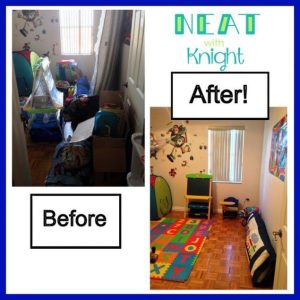 The final phase of a moving project includes cleaning, unloading, unpacking, and organizing items. Here are some pointers to maximize your time and energy during the home stretch.
The final phase of a moving project includes cleaning, unloading, unpacking, and organizing items. Here are some pointers to maximize your time and energy during the home stretch.
Cleaning and Unloading:
Begin by disinfecting the space. Moving expert, Diane Schmidt, has posted a detailed “cleaning checklist for new homes” on www.about.com. Next unload the boxes. Remember to lift or lower by bending at the knees and by keeping your back straight. Always push rather than pulling boxes.
Taking the time to measure items and create a floor plan beforehand is extremely important so that big pieces of furniture can go straight from the truck to their new spot. Boxes of items shouldalso godirectly to theroomwhere the items will be placed or to a general place like the garage or spare room where they will be separated later. If go the latter route, position the labels outwards and keep each room’s boxes together.
Unpacking:
Once everything is inside the property, the next step is to get it out of the boxes. One idea is to unpack a few boxes in each room starting with high priority items such as toilet paper, towels, toiletries, perishable food, essential clothing, and bedding. Unpacking a little bit in each room may help you feel more at home sooner, but this strategy becomes difficult if your boxes are not well labeled.
Another option is to start with the boxes of one room and work until it is completely unpacked and organized. This method will resultin one finished room where you can relax any time you get overwhelmed. If you implement the one room at a time idea begin with thespace that is most important to you. Maybe the kitchen because you love to cook or gather there, your room so you can sleep well, a child’s room, or the living room so everyone can camp out together on the first night.
When you open a box, use a box cutter by exposing a small amount of the blade and slicing at an angle away from the body to avoid cutting yourself or any of the items inside. Retract the blade after each use. Remove and unwrap the items then set them aside. If you unpack anything that you no longer want, immediately bag it for donation, sale or trash.
Collectthe packing materials as you go along. Savesome of the materials if you will be moving again in the very near future(if space allows). You can alsoask your mover if they take used supplies, stack them for the bulk trash pickup, re-purpose them for fun games or art projects (ideas on www.movinginsider.com), or give them away to someone else who is moving. Online posts for free moving boxes are common on Facebook, Craigslist, and www.uhaul.com. U-Haulalso has drop sites where used boxes are free for customers.
Organizing:
I believe that organizing items when you move is the easiest time to organize because you are starting with a fresh slate and probably have few preconceived notions about where items should go. There is no need to stress about where to put things away because there is no “right” or “wrong” answer. Simply create a plan, implement it, and makes adjustments later if needed.
A common move-in mistake is to start putting things away in drawers, cabinets and closets as soon as you pull them out of the boxes. The problem with this method is that you end up moving items numerous times as more and more things come out of the boxes and you start to realize just how much needs to be stored.
As a savvy mover, your strategy should be to get everything out first and look at it in categories before you put anything away. Try keeping like things togetherand thinking logically about what items are needed in each area of the home.For example, you may to store the mugs near the coffee machine, the socks near the shoes, the makeup near the mirror, and so on. Maybe you want to put a few rolls of toilet paper in each bathroom rather than having one general area in the house where all of the supplies are kept. Everyone is different, so just take a little bit of time to decide what is best for you and the other inhabitants of the home.
The things you use often shouldbe easily accessible. The otherthings can go up high, down low, orin the back. Avoid creatingextra tall piles that need to be removed each time one thing comes out, such as a pile of 25 shirts. Instead of over-stacking, consider using a shelf divider, portable drawer units or plastic boxes to divide smaller categories of items.
When you finish, all of the packing materials should be gone and everything should be in its new place where you can locate it within minutes.
Knight is a Miami-based Professional Organizer. Visit neatwithknight.com or call (305) 502-6391 for information.






